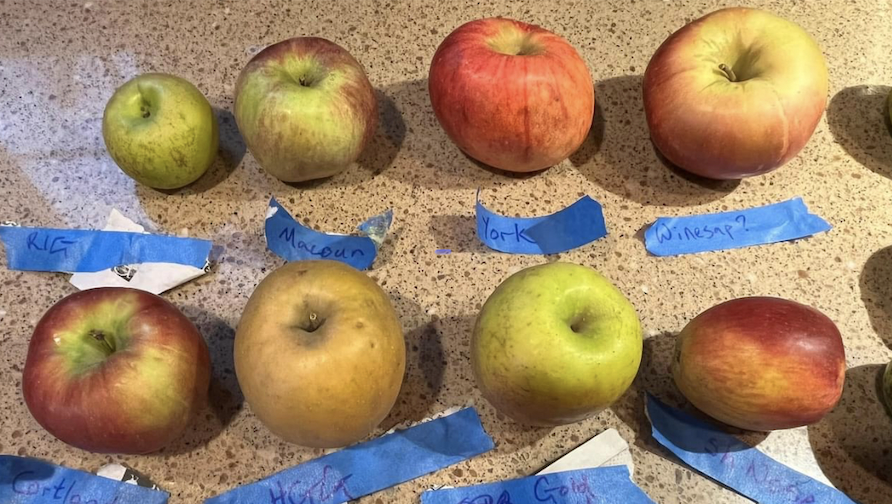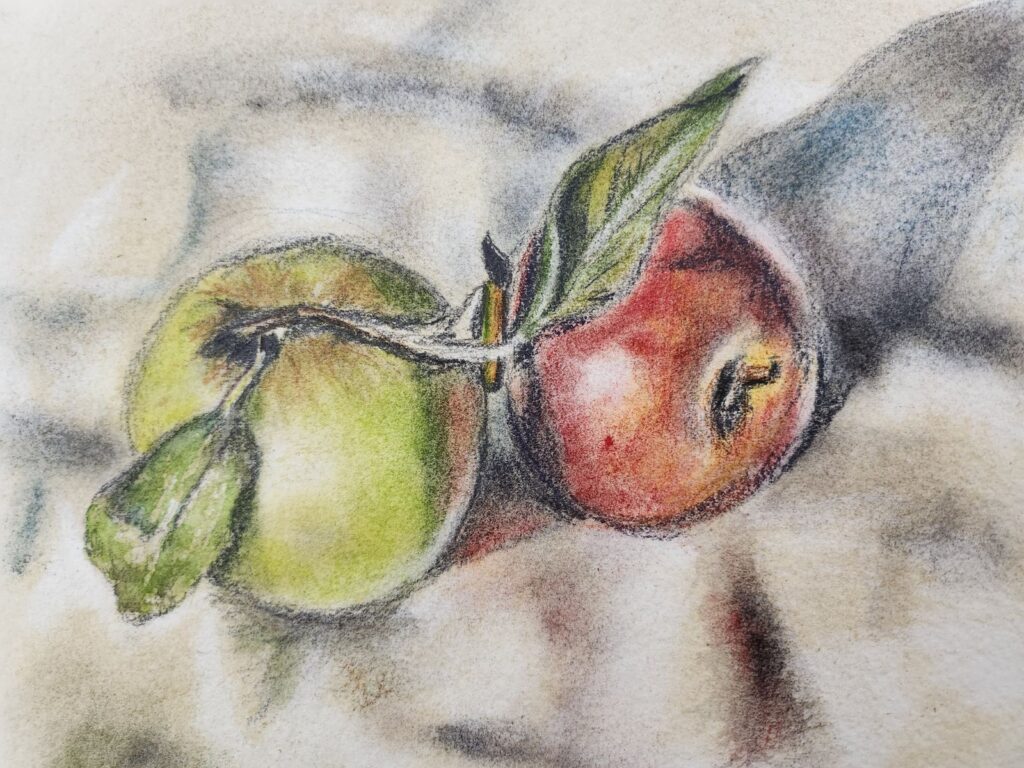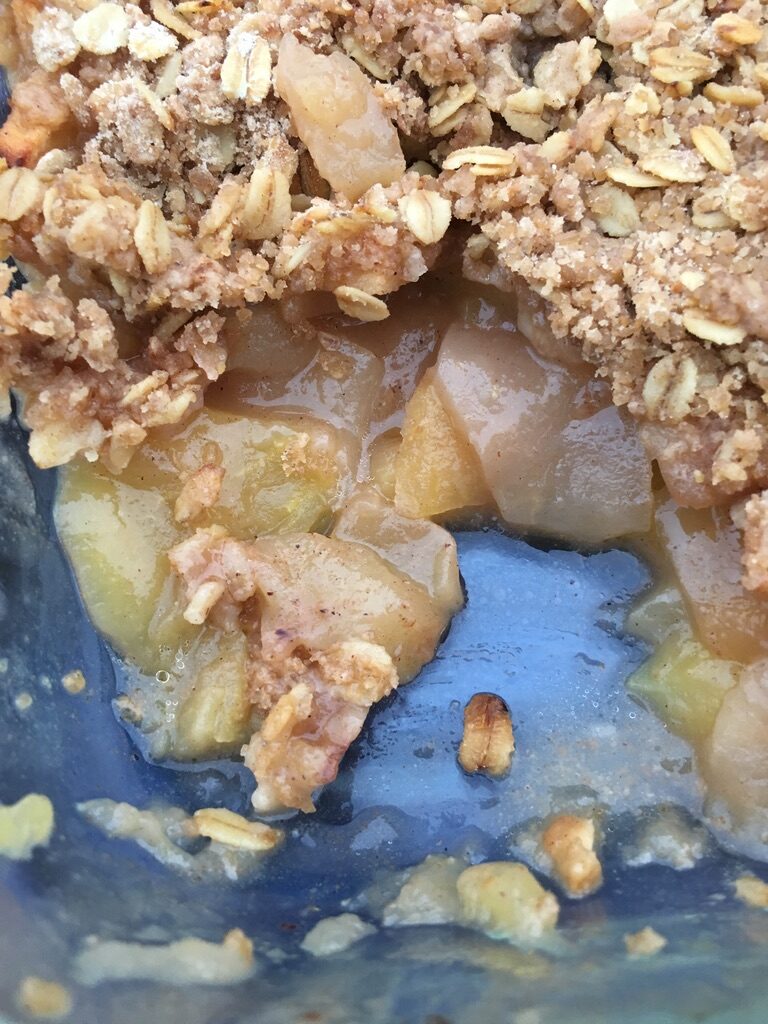Culinary information about specific apple varieties
The Short Version: There is a lack of publicly available, searchable, reliable information about how specific varieties of apple respond to different cooking techniques. I’m doing something about it.
Apple varieties don’t just happen; they are chosen, or created on purpose.

If you plant seeds from a Granny Smith apple, you won’t get a Granny Smith tree. Apples don’t come true from seed; they have to be grafted. If more than one person has grown that apple, someone tried the first one and thought “This is worth going to the trouble of propagating.” Someone chose it over other apples. Heirloom apples feel a bit like working dog breeds to me: They retain the aptitude for a historic job. I want to re-discover what those jobs might have been. There are also new apples (e.g., Cosmic Crisp, Jazz, Rave, SnapDragon, and SweeTango) developed at places like Washington State University, the University of Minnesota, Cornell AgriTech (part of the College of Agriculture and Life Sciences), and by a collaboration in New Zealand between Plant and Food Research and ENZA, an apple marketing group. I want to find out what jobs these new apples are best suited for.
The apple knowledge gap
There are excellent collections of information about apples available online (such as Adam’s Apples, Orange Pippin, and Pomiferous). There is culinary information available for some varieties, but it tends to be in a “Top Ten Picks for Pie” format, or focused on individual trademarked apples. But I haven’t found a resource that documents the best ways to use a particular variety. Most sources don’t get more precise than whether an apple is good for eating fresh, for baking, or for cider. I want specifics.
I have very strong opinions about which apples I like to eat raw, but those are a matter of taste. For this project, I want empirical specifics: What time of year they ripen in what geographic location, to what degree they keep their shape if baked whole, if baking them turns them to fluff or mush, whether they dissolve into a stew or keep some chunkiness, if they dehydrate to chewy or crispy. Facts, not opinions. (I love writing about my opinions, and I love reading other people’s opinions, but that’s not what this project is about.)

So many uses, so little knowledge management
Within “eating fresh,” I want to know how dense/hard/crisp a variety is, how coarse or fine-grained the flesh is, how juicy vs. dry it is, how fast it browns after slicing, and how it holds up or changes in different raw dishes (e.g., fruit salad, turkey salad, various kinds of slaw).
For “cider,” I’d like to know whether that means hard cider or sweet cider, what kinds of flavor notes (beyond sugar) will persist into the cider, and what other flavors it might help to balance. I’ll need collaborators for this part: Most sweet/orchard cider disagrees with me, and while I appreciate hard cider (especially the dry styles), I don’t drink much alcohol.
For “baking,” I want to know how an apple will behave texturally when baked whole; cored-and-filled; sliced and baked, either sautéed first or not, in a pie or crumble or on a sheet of puff pastry; cubed into a cake; peeled/halved/cored for a Tarte Tatin; or whipped with egg white and sugar for the beautiful and mysterious Russian confection called pastila.
Moreover, baking is not the only way people cook apples, and cooking isn’t the only way to process them. Some types dry beautifully. Others make excellent applesauce or apple butter, even if they are unimpressive when eaten fresh. Some shine when sautéed and served on an oven pancake (aka “Dutch baby”). Some are much better for apple jelly than others.

I’m also interested in empirical comparisons of how a specific variety pares: Some give up their skins and/or cores easily, as though they are cooperating, and others fight the paring knife (as I discovered when making an apple crisp with eight different varieties). This experience—of how distinct these eight apples felt under a knife—was another root of this project. It made me think “How much knowledge have we lost because it was in hands that didn’t know how to write?”
Where is this project going?
I don’t have the revenue stream/legal entity pieces figured out (e.g., Can a 501(c)(3) nonprofit use Patreon?), or all of the channels I want to use (Instagram? TikTok? Maybe a podcast??), but eventually I would like to:
- Manage a public database of this information, including entries from other people who agree to follow careful testing protocols (which I am developing);
- Work with orchards to develop recipe handouts, pamphlets, or cookbooks for the varieties they grow;
- Interview people who work in new apple development and/or heirloom preservation;
- Make a search-by-postal-code directory of what orchards grow what varieties (or work with Orange Pippin to build on their existing directory); and
- Ideally, go global: Travel to places with long and deep histories of apple growing and use (apples first arose in Kazakhstan and went in every direction).
Watch this space for updates, including how to subscribe to my newsletter (which doesn’t exist yet) and other ways you can support this work.